Tone Glow 121: Chicago International Puppet Theater Festival, 2024
Joshua Minsoo Kim reviews 10 shows from the 6th annual Chicago International Puppet Theater Festival
2024 marked the sixth edition of the Chicago International Puppet Theater Festival, the largest showcase of puppetry in all of North America. Founded in 2015 by Blair Thomas, the event initially ran every other year until COVID brought things to a halt. But since 2022, Thomas and the rest of the crew have shown no signs of stopping, bringing artists from around the world to present their works on a now annual basis. From January 18th to the 28th, more than 14,000 people attended 100+ events held at 26 venues throughout the city. Most of the performances I attended were sold out; clearly, the people of Chicago love puppets.
This was my first year attending the festival. I decided to dive into puppetry last year, shortly after the 2023 festival had ended. I will admit that what initially sparked my interest—beyond a desire to constantly position myself in spaces that make me feel out of my depth—is an essay from 1810 by Heinrich von Kleist titled “Über das Marionettentheater” (“On the Marionette Theatre”). In it, he extols the puppet as an ideal model, vastly superior to that of the dancer. “The operator has absolutely, by dint of the wire or string, no other point in his power than this one: all remaining limbs are, as they should be, dead, pure pendula, and so follow the simple law of gravity; an excellent characteristic that one looks for in vain among the greatest part of our dancers.” Reading this filled me with glee: Who thinks like this? It was an idea of artistic purity that excited me for its novelty, and later that year, I went to one of the Chicago Puppet Lab events at the Chopin Theatre.
Given my propensity for obsessively consuming art, I aimed to attend as many shows as possible at this year’s festival. In fact, as I was grabbing my ticket for the final show, I was greeted by someone saying, “Josh, right?” before I said a word. I looked down, unsure if I was wearing my workplace’s name tag, and asked how she knew. I guess I’d been to a lot of shows. (It is not lost on me, however, that I was one of few non-white attendees at every single performance.)
By the festival’s closing night, I made it to 10 different performances, and took stock of everything I had witnessed. More than anything, I appreciated how I was consistently marveling at what each show was doing, both on a conceptual and technical level. That the shows took place at such different venues was nice, too, as each space carried a very specific atmosphere. As someone whose only festival experiences have been with music and film, it was exciting to have another chance to experience so much art in a short amount of time. Below, find capsule reviews of 10 different events from the 2024 edition of the Chicago International Puppet Theater Festival; my hope is that you’ll seek out puppet shows near you, too. —Joshua Minsoo Kim
Wakka Wakka’s The Immortal Jellyfish Girl
It is hard to imagine a better show that could have kicked off the festival than Wakka Wakka’s The Immortal Jellyfish Girl. The story is an ambitious star-crossed lovers affair, set in a post-apocalyptic future where Earth is nearly destroyed by ecological collapse. There are two different species, Homo technalis and Homo animalis, that our protagonists Bug and Aurelia fall into, respectively. The show begins, however, with a fourth-wall breaking narrator dubbed the Fantastic Mr. Fox. His presence is initially contemptible—he relays groan-worthy jokes that make you feel like you’re trapped at a terrible stand-up routine. As the show goes on, though, his bright presence and jovial demeanor feel purposeful: he provides a necessary contrast to the story proper, which is frequently morose as it grapples with climate change’s devastation on our world. At the show’s conclusion, when our two leads pass away, Mr. Fox comes out and exclaims that it shouldn’t have ended this way. He begins to pick up the puppets, and acts out the fate that should have befell them.
There are numerous logistical feats that make The Invisible Jellyfish Girl a treat. In particular, the final 20 minutes are kaleidoscopic and trippy, the projections and puppeteering working in tandem to present a technicolor science-fiction climax that left me in awe at its many moving parts. But it is this simple maneuver from Mr. Fox that has rattled around in my head for weeks. Puppetry is an artform that is largely exciting to me for the lack of distance between a performer’s action and its subsequent result. The effect of a single puppeteer’s movement is both obvious and legible, and I’ve found it thrilling to see and meditate on this relationship (this isn’t true for me of other mediums, e.g. seeing someone strum a guitar and hearing the resulting chord is never that exciting).
And so, when Mr. Fox tries to change the story’s tragic end, it creates a moment of unavoidable reflection. The death of our planet is the result of human intervention and greed, of industrialization and capitalist interests. Is there anything we can do to stop it? Are we to be fatalistic and bemoan what could’ve been only when it’s too late? Are we just laughing things off and finding shelter in the distance we create from this problem, much like Mr. Fox does in his breaking of the fourth wall and incessant joke-telling? He ends the show by proclaiming that jellyfish have been around for hundreds of millions of years, and will eventually outlast us all. There is a pageantry to this final moment, as massive translucent tubes fall from the ceiling in the shape of jellyfish tentacles. It was a moment of alarming dissonance, with confetti popping everywhere and the entire audience rapturously applauding—with many even rising from their seat to give a standing ovation. The Immortal Jellyfish Girl is not moralistic, nor does it offer a solution. Instead, it has us follow a complex story that ends with poignant reflection. This is how we go out: as spectators of the end of the world, clapping at our own demise. —Joshua Minsoo Kim
The Immortal Jellyfish Girl was performed at Steppenwolf Theatre. Kim viewed the show on January 18th at 7:30pm. More information about Wakka Wakka can be found at their website.
Papermoon Puppet Theatre’s A Bucket of Beetles
There is an innate charm to Papermoon Puppet Theatre’s A Bucket of Beetles: its story and puppets are based on ideas from a four year old who stars in the production itself (he is currently eight). The backdrop is plain but simple, aiming for a fantastical rainforest that brings to mind the charm of Amanita Design’s point-and-click adventure games. The show begins with a Nujabes-style hip-hop beat blaring through speakers. During this, bugs crawl across a large beige tarp via shadow puppetry and the title is soon revealed; it felt like the opening sequence to a video game.
This introduction is crucial in establishing specific expectations for the Indonesian company’s performance. The contemporary music (at times a sweet, spare ambience) and shadow puppets (simplistic, much like a child’s own drawings) immediately position Beetles as something far removed from the tradition of Indonesian wayang. Interestingly, I was mostly reminded of Japanese art forms, specifically that of kuruma ningyō, which involves a puppeteer sitting on a small, wheeled cart. The protagonist here is a little boy named Wehea. Made out of papier-mâché, he is controlled with a startling attention to detail that channels the nuanced wonderment that any kid finds when exploring the world. I was stunned at how much sound played a role in conveying his emotions. More than any of the music, it was the patter of his feet (sometimes indistinguishable from the cart’s own squeaking wheels)—often in relation to the papier-mâché beetles’ own legs—that expressed excitement and resolve.
The most memorable parts of the show involved Wehea’s intricate movements. While he was largely controlled by one puppeteer, he was eventually handled by another. When he rides one of the beetles and flies around the stage, one more puppeteer joined in. For a loose story about the link between man and nature, A Bucket of Beetles finds its most brilliant moment in this combining of two puppets into “one.” It was not just evocative for its gradual lead-up, but for how it recalled the three-man manipulations of Japanese bunraku. Here was a historical form of puppetry that was directly tied to themes of connectedness, subtly announcing the show’s greatest message: it is in understanding history and tradition, and with a willingness to bridge intergenerational ideas, that we find collective harmony. —Joshua Minsoo Kim
A Bucket of Beetles was performed at the Chopin Theatre. Kim viewed the show on January 19th at 5pm. More information about Papermoon Puppet Theatre can be found at their website.
Figurentheater Wilde & Vogel’s Spleen
Spleen was the most out-right avant-garde production of the entire festival. Musician Charlotte Wilde and puppeteer/puppet maker Michael Vogel were the only two people on stage at the intimate Richard Christiansen Theater, and this work—which originally premiered in 2006—was a striking and evocative exercise in transience. Inspired by Charles Baudelaire’s Le Spleen de Paris (1869), the 70-minute performance had a similar format to the French writer’s influential collection of prose poetry: it felt like a series of loosely connected vignettes, at once free-spirited and introspective.
As Wilde constantly played music on both violin and guitar, Vogel would occasionally put down his puppets and sing with her. These songs felt less like interludes than essential, illuminating passages. Indeed, Wilde may have been stationed near the back of the stage, providing the necessary accompaniment to Vogel’s performance, but these moments were emblematic of the constantly shifting dynamics that defined Spleen. Early on, we watch as one of Vogel’s puppets—a grotesque bird-like skeleton—wraps its hand around the puppeteer’s leg. It feels, in that moment, inherently more “real,” as if it’s been granted a soul—and not from Vogel himself, despite his own control of the puppet. Later, he ruptures the black-and-white role of puppet/puppeteer by making them look like dance partners engaging in an emotive pas de deux—at times, it looks like he is the one being led. Vogel even touches upon the gender binary when, at one moment, he lays a puppet that depicts a naked woman—breasts exposed—over his own body.
Regrettably, the show features audio of children reciting various poetic and philosophical texts. I found this inclusion clumsy and overwrought; the performance was potent enough to relay the messages. I was reminded of albums released by the experimental record label Purge.xxx, including one that finds an 8-year-old boy reading The Communist Manifesto. The profundity and delight of that cassette tape comes from hearing mistakes, as well as the reduction of speech to basic elements; here, the readings provide little more than ham-fisted gravitas.
Still, Spleen was the most thought-provoking show at this year’s festival. I frequently thought of two Baudelaire poems: “Anywhere Out of the World” and “Be Drunken.” In the former, Baudelaire considers the anxiety of existence as rooted in a desire for being something (and somewhere) else. There was a clothesline hanging above the stage that puppets were regularly placed on; at one moment, Vogel hangs himself, taking on the role of his creations. This repeated role-switching was unexpected and stirring, and it reminds me of Baudelaire’s proclamation to “Be always drunken” as a way to “not feel the horrible burden of Time.” He asks us to be drunk “with wine, with poetry, or with virtue,” which I’ve always understood as a mandate to live life with a commitment to excess—to deeply feel and be, whatever that may mean. Spleen, in both form and content, embodies that idea with lyrical verve. —Joshua Minsoo Kim
Spleen was performed at The Biograph’s Richard Christiansen Theater. Kim viewed the show on January 19th at 9pm. More information about Figurentheater Wilde & Vogel can be found at their website.
Tarish “Jeghetto” Pipkins’ The Hip Hopera of 5P1N0K10
The Hip Hopera of 5P1N0K10 was the most barebones show that I saw at the Chicago International Puppet Theater Festival. At the eta Creative Arts Foundation, Tarish “Jeghetto” Pipkins and his two sons, Divine and Tarin, performed a show that was less about articulate movements than ephemeral gestures. There was a screen in the middle of the stage that projected a digital film, and puppeteers came out on either side to present simplistic movements with their puppets, which included a dinosaur, the titular wooden boy (pronounced like Pinocchio), and a spider-doll creature that looked like Babyface from Toy Story.
I found most of the show underwhelming. The visuals were especially egregious, as if assembled from stock images and hastily edited. The music, too, was strange: it was extremely dated and uncharacteristic of where rap music is today, but it did not strive to capture the glory of the genre’s golden age either. Instead, there were simple, looping beats that included unimaginative video game samples, like Navi’s “Hey, listen!” from The Legend of Zelda: Ocarina of Time.
In a Q&A after the performance, Pipkins explained his general ethos, which is that he tries not to micromanage. “I give a direction and try to let gravity take over,” he said. That loose approach helped me appreciate the show more, as I could relate the simple pleasures of his puppetry to that of a straightforward beat tape: sometimes, you can hear a sample run for minutes and just revel in that.
Even then, smaller moments from the show did stand out. Most moving was Pipkins controlling a puppet that played a cello. It was done with thoughtfulness and care, so much so that one could hear the sound of the cardboard bow rubbing against the cardboard cello—combined with the actual music, this mélange was affecting in its gentleness. Also exciting was when 5P1N0K10 dances while a puppet DJ/emcee asks the crowd to echo his chants of “hip-hop.” It was in this corny but endearing moment of audience participation that I was able to enjoy the show for its sparse, elemental nature. —Joshua Minsoo Kim
The Hip Hopera of 5P1N0K10 was performed at the eta Creative Arts Foundation. Kim viewed the show on January 21st at 1pm. More information about Pipkins can be found at his website.
Wakka Wakka’s Dead as a Dodo
Dead as a Dodo is a veritable, crowd-pleasing wonder. There was no other show I saw at this year’s festival that made me so frequently utter “wow” (it was in the dozens), and that felt as seamless in its production. The pacing and humor is fast, and the ingenuity is startling—it’s reminiscent of classic Looney Tunes in how it is amusingly clever both on the surface and when you think more deeply about each visual gag’s construction. The story follows a skeleton man and a dodo as they go on an adventure through different realms. They eventually separate, the skeleton searches for the dodo, and they end up in a lab where scientists are researching the bird’s sudden reverse-extinction (the animal begins as bones before acquiring feathers and flesh).
The story itself is straightforward and the beats are familiar, but it is in this familiarity that the show thrives. There are jokes that are more than a century old—playing a xylophone made of bones, for example—but seeing it assembled in real time revitalizes these ideas; the quickness with which scenes move makes for a never-ending spectacle. This is especially true when the puppeteers move into large-scale musical numbers, like one that involves the King of the Bones playing a guitar solo on a Gibson Flying V (which is made of, yes, bones).
The show’s first act takes place in a dark cave, and one is immediately aware of the set design’s minimalist brilliance. A fringe hangs from the top of the stage, and there are different “layers” of fabric throughout the length of the space, with each successive curtain getting longer. Projections shine on them to create a subtle sense of depth. The puppeteers themselves are dressed in all-black outfits adorned with sequins, and their glimmering presence is apt since they contort their bodies into the craggy rock formations that the puppets walk on. The show is filled with these small, clever decisions.
While each scene has a memorable shtick, the most breathtaking passage involves the two protagonists lost at sea. Puppeteers move a massive tarp that represents water and it looks like a natural ebbs and flows. Soon, there’s a charismatic man who floats by on a boat, and he helps the two leads just as a massive whale arrives to wreak havoc. In the biggest highlight of the production, we watch as ocean levels rise to reveal the protagonists caught underneath, the lights changing color to signal the beauty of this thalassic space; before long, they’ve got their heads above water again. It all happens within seconds, and as with the rest of Dead as a Dodo, it iis effortlessly conducted; you can’t help but admire the dedication and craft. —Joshua Minsoo Kim
Dead as a Dodo was performed at The Biograph’s Začek McVay Theatre. Kim viewed the show on January 21st at 7pm. More information about Wakka Wakka can be found at their website.
Figurentheater Wilde & Vogel and Grupa Coincidentia’s Krabat
Much like Spleen, Krabat was a firmly avant-garde puppet show from Wilde & Vogel, though the duo were accompanied by three members of Grupa Coincidentia. On a very basic level, this meant that as Wilde played guitar or violin or worked with electronics, multiple people could stage an entire performance in a more audacious manner that what came with Spleen. Based on Otfried Preussler’s fantasy novel of the same name, the show follows a homeless war orphan finding shelter with numerous miller boys and their master. What is interesting, though, is that even though this production is more narratively driven, its decisions to stray from traditional storytelling made it feel, at times, even more experimental than Spleen.
The show, for example, began with the performers huddled in a corner near the front of the stage. One man was doing a headstand, though didn’t have his feet straight up. While doing this, bones would slowly move up his body and through his legs. The reason for this was not entirely clear, nor was this peculiarity something that was announced to the audience; I’d be surprised if every single person was aware this was even happening. Krabat was thrilling in this way: there were multiple inscrutable events that could be occurring at any given moment, but it was generally loose in the way that blocking guided one’s eyes (naturally, since Spleen foregrounded Vogel’s performance, it was easy to stay fixed on his movements). The stage became a more open field, and made the show have the semblance of a surreal fever dream. Indeed, the plot involves black magic, and there’s a scene where someone carves a word into their forehead and proceeds to bleed; it sounds edgy on paper, but it was more thrillingly bewildering in its grotesqueries.
My favorite part of the show was when Vogel spit up water. It was a strange moment, one in which I couldn’t tell if he was breaking the fourth wall. It had the semblance of someone intentionally ruining a performance, and right when it happened, the lights in the entire theater turned on—not just the ones on stage. For a brief second, I wasn’t sure if the show had ended. I found myself enamored with this slyness. The show doesn’t have many words, and the way the puppeteers/actors playfully directed and diverted attention kept me on my toes, awaiting every moment. It was the only show at this festival that I found as confounding as it was exhilarating. —Joshua Minsoo Kim
Krabat was performed at The Biograph’s Začek McVay Theatre. Kim viewed the show on January 25th at 7pm. More information about Figurentheater Wilde & Vogel can be found at their website. More information about Grupa Coincidentia can be found at their website.
Basil Twist’s Book of Mountains & Seas
Held at the historic 600-seat Studebaker Theater, Book of Mountains & Seas was an extravagant production that was more high-art-minded than anything else at the festival. Ambitious in both presentation and scope, it featured twelve singers, six puppeteers, two percussionists, and a conductor who explored four Chinese myths through song and puppetry. The singers’ choral arrangements cast a solemn atmosphere over the proceedings, their faces bathed in an orange glow as they looked down at their score. This austerity was appropriate: the puppetry on display was all about grand, sweeping movements, and the overall feeling was of witnessing towering majesty. If the floating lanterns didn’t cast your gaze heavenward, then the sheer size of the puppets was enough to make you feel small both in this space and in the scope of all existence.
The myths themselves are distilled into basic elements—there are creation stories, one about a princess-turned-bird enacting revenge on the sea, and a climactic final act that finds the giant Kuā Fù chasing the sun. I found the second and fourth sequences most riveting, simply because there was more going on visually. The former saw a massive sheet of white silk rustling around as colorful lights flashed through it. Up above was a swallowtail flag-shaped creature meant to represent a bird. The hypnotic flow of the ocean and the graceful swooping of the avian came together in a beautiful dance. In the latter myth, a massive creature is assembled by pieces of driftwood, limb by limb. Its slow movements, carefully controlled by the puppeteers, gave the semblance of something momentous. And just as we get a sense of its personality, it gets deconstructed in the show’s final minutes, and it felt legitimately sad.
Ultimately, the overarching feeling that Book of Mountains & Seas carried was a respectable, bog-standard epicness. Everything is in its right place: the puppets are big, the music is dignified, the performers all look and act in a non-descript fashion to highlight everything else in the production. The third act in particular was tiresome; there is only so much I can appreciate about paper lanterns bobbing around in a large, dark hall. Isolating and magnifying these elements is interesting on paper—the Legend of the Ten Suns is fascinating, and to have our eyes fixed on these objects can help bring the story to life—but it is the kind of performance that makes you recognize how much more interesting it is think about mythologies, to not let imagination be stifled by man’s creative limitations. There were multiple points throughout the show where a bending gong was struck multiple times in succession, preventing its distinct pitch-bending to resonate and be felt. That stifling sensation was a neat summation of my experience with the show at large. I am asked to meditate on its poetics, but what is offered is a reduction of the source material. —Joshua Minsoo Kim
Kim attended the performance of Book of Mountains & Seas was performed at the Studebaker Theater. Kim viewed the show on January 26th at 7:30pm. More information about Basil Twist can be found at his website.
Manual Cinema’s Leonardo! A Wonderful Show About A Terrible Monster
While watching Leonardo! A Wonderful Show About a Terrible Monster, it became clear that I was witnessing one of the great 21st century artworks made for children, somewhere alongside A Town Called Panic (2009) and Boy & the World (2013). What is crucial in any such production is the sparking of creative wonder, and Chicago’s own Manual Cinema opts for a riveting livestream set-up that feels like watching behind-the-scenes footage. Throughout the show, the puppeteers employ songs, illustrated paper puppets, and traditional hand-sized puppets that are filmed and presented on a vertical screen. It’s meant to look like a book, which is obvious when the crew uses three-ring binders to flip through different actions in a scene. It also feels like watching a TikTok; seeing the performers on stage and then onscreen provides a chance to marvel at the artistry in framing bodies in a cramped aspect ratio.
The show itself is based on Mo Willems’ books, and we follow the titular creature as he makes a name for himself. He is, by all accounts, a bad monster—he’s more cute than horrifying, and even after visiting the library to find Sam (“the most scaredy-cat kid in the whole world”), his screams do nothing to startle the boy. At times, Manual Cinema encourages audience participation to great effect. The best of these moments comes when a sign is held up to ask everyone to scream—Leonardo is chuffed at his success, and in response, so are we.
There are two stories in the show, and the only reason that one may get a little weary of this structure is how the second riffs on jokes found in the first. This likely isn’t a problem for any children who watch, and it’s not a massive dealbreaker for adults either as new ideas (in both the story and its construction) arrive at a rapid clip. Ultimately, these are tales about self-acceptance and making friends with those who are different from ourselves—lessons that feel especially potent when coupled with the livestream format. As social media (for both kids and adults!) prey on insecurities and foster faux-communities built on parasocial relationships, messages like these hit hard even when made palatable for children. To do the thing—in this case, for Leonardo to accept who he is and for Sam to later befriend another scaredy-cat in Kerry—requires work. And in a way, to see the transparency of Manual Cinema’s production only drives that message home all the more; the final product can look so easy, but it is never so simple. —Joshua Minsoo Kim
Leonardo! A Wonderful Show About A Terrible Monster was performed at The DuSable Black History Museum and Education Center. Kim viewed the show on January 27th at 3pm. More information about Manual Cinema can be found at their website.
Belova ~ Iacobelli Theatre Company’s Chayka
Chayka is the sort of theatrical production that is so robust in its ideas and smooth in its execution that it can leave you in tears at what is on display. It is a minimalist one-woman show, with Tita Iacobelli controlling a human-sized puppet with whom she shares legs and a left arm. Chayka, the titular puppet, is an aging actress who is initially oblivious to her whereabouts. She eventually learns that she is performing her final show, taking on the role of Irina Nikolayevna Arkadina from Anton Chekhov’s The Seagull. When translated from Russian to English, “Chayka” means “gull,” and her name hints at the show’s exploration of shifting identities. We soon learn that no other actors are present, and that she must take on the role of everyone else, too, who are represented by inanimate objects like a teddy bear, a book, and peach-colored cloth.
The staging is stripped-down: there’s a table and chair, and a long curtain hanging from the ceiling that stretches a couple meters wide. When Chayka begins, Iacobelli walks out to the audience near a ray of light, particles fluttering in the air. It establishes the show’s dreamlike atmosphere, a facet that is regularly tied to explorations of performance, aging, and the meaning we try to grant our lives. Some moments are brash and deeply emotional, as when Chayka’s wig is torn off and she contemplates her ostensible fraudulence. Others are more subtle, like the numerous interactions that Iacobelli’s character has with Chayka, both voiced by herself. (The other characters in The Seagull are voiced by Iacobelli through Chayka, too, which makes for semi-meta moments throughout the performance.) It’s rhapsodic to watch: Iacobelli presses her face against the back of Chayka’s head when speaking as the puppet, as to avoid making evident that her mouth is moving. This constant shifting between characters heightens the drama, as it amplifies the anxiety that Chayka has in grappling with self-worth and identity.
For how spare the stage looks, Iacobelli makes ample use of the space. One of the highlights of the performance is when she and Chayka move behind the curtain to undergo an unexpected costume change. In a long, flowing dress, Chayka arrives and frolics about. She soon stands in front of the table, and grows taller. Iacobelli presumably does this by getting up on the table and lifting the puppet to reveal the entire length of the dress. However, Iacobelli also surreptitiously moves behind it, and then allows Chayka’s now extremely tall frame to fall backwards across the furniture. It’s the most surreal moment of the show, but it is this severance from the real that captures her frazzled emotional state. In the show’s finale, Chayka rips the tablecloth and cover away from the furniture, and also tears down the curtain: everything is laid bare, including herself. She moves to the back of the stage—a space I didn’t even know was going to be utilized—and is seen on the floor, distraught and hopeless. Compared to the show’s first moments, she is now at the furthest distance possible, and yet it is here—in a moment of literal remove—that we understand who she is, more than ever before. —Joshua Minsoo Kim
Chayka was performed at the Chopin Theatre. Kim viewed the show on January 27th at 7pm. More information about the Belova ~ Iacobelli Theatre Company can be found at their website.
Theatre Y and Michael Montenegro’s Little Carl
There are numerous aspects of Little Carl that made it stand out from the rest of the Chicago International Puppet Theater Festival’s programming. For one, it featured intimate live music from two artists: AACM member Fred Jackson, Jr. (saxophone, hand percussion) and Chicago improvising mainstay Bill MacKay (electric guitar). They played throughout the entirety of the show and its 80-minute depiction of gun violence. MacKay’s playing was especially foundational, as it was reminiscent of the bluesy, elegiac ruminations that define Loren Connors’ Hell’s Kitchen Park (1993). To hear it alongside the actors’ speech—which had the tenor of spoken word directly addressed to the audience—was to come face to face with grim realities.
It is imperative to note that Theatre Y is a Chicago-based organization, and one that aims to share stories about the community by involving them in their productions. With Little Carl, their Youth Ensemble was performing alongside adults (including local legend Marvin Tate), and they contributed to how the story would be told. The most gut-wrenching moment could be anticipated from a mile away: a bunch of shadow puppeteers come together to form the body of a police officer, who then brings out a gun to murder a Black boy. There is a flashlight that shines through tarp, its circular glow representing a bullet, and it travels slowly from stage left to stage right. Its presence is so bright that it is impossible to ignore—it is brighter, even, than the overhead lights that fill up the boy’s dingy home. When we finally hear the gunshot, a puppet representing the child appears, and a girl dressed in ornate garb dances with it as bells adorning her clothes continually chime. It was the most poetic and moving sequence in the entire festival—a moment to honor and love those who’ve lost their lives to racist cops.
After the show, Theatre Y opened up the space to have audience members ask questions to the performers. I was, admittedly, very nervous to hear what people would say. When I went to The Hip Hopera of 5P1N0K10, I was surprised that the audience was overwhelmingly white, much like the rest of the fest’s performances. The same was true for Little Carl. (I imagine the audiences look different throughout the rest of the year, especially since tickets for each festival show were usually $40 per adult). At one point, a person asked if any of the young kids had known anyone who’d been shot. It was one of those classic well-meaning but brazenly callous moments that made me squirm in my chair. As a high school teacher whose students have shared stories of friends who’ve died from gun violence, I have seen how much time and effort that is needed to foster a safe, tight-knit space—the kind that any young person would be comfortable sharing such a traumatic event in, especially to an entire group of people. Up to this point, I was already very moved that Little Carl was an extremely Chicago production in numerous ways. It’s funny: this questioning felt quintessentially Chicago, too. —Joshua Minsoo Kim
Little Carl was performed at The Biograph’s Richard Christiansen Theater. Kim viewed the show on January 28th at 3pm. More information about Theatre Y can be found at their website.
Thank you for reading the 121st issue of Tone Glow. See you at next year’s fest.
If you appreciate what we do, please consider donating via Ko-fi or becoming a Patreon patron. Tone Glow is dedicated to forever providing its content for free, but please know that all our writers are paid for the work they do. All donations will be used for paying writers, and if we get enough money, Tone Glow will be able to publish issues more frequently.



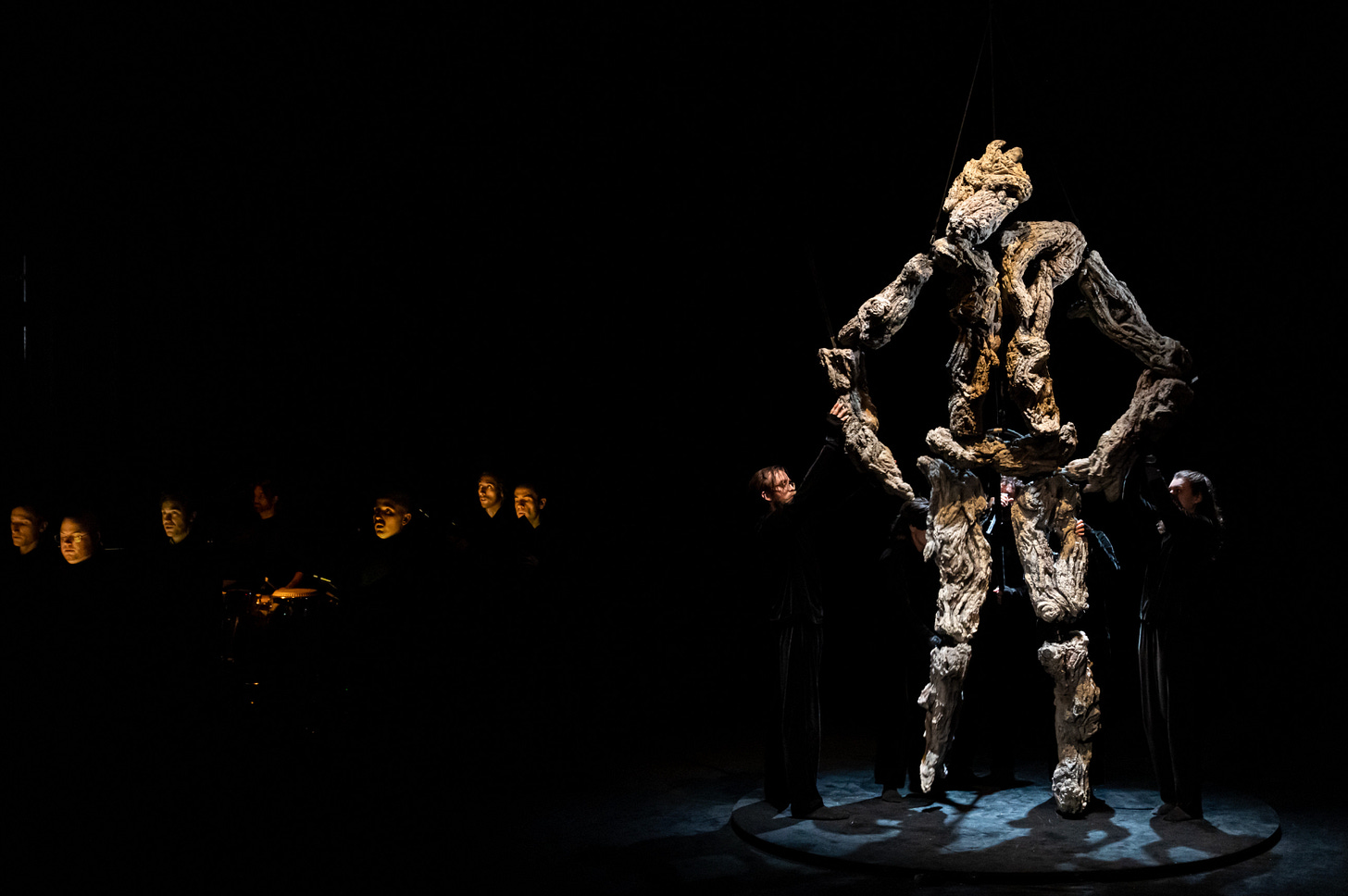
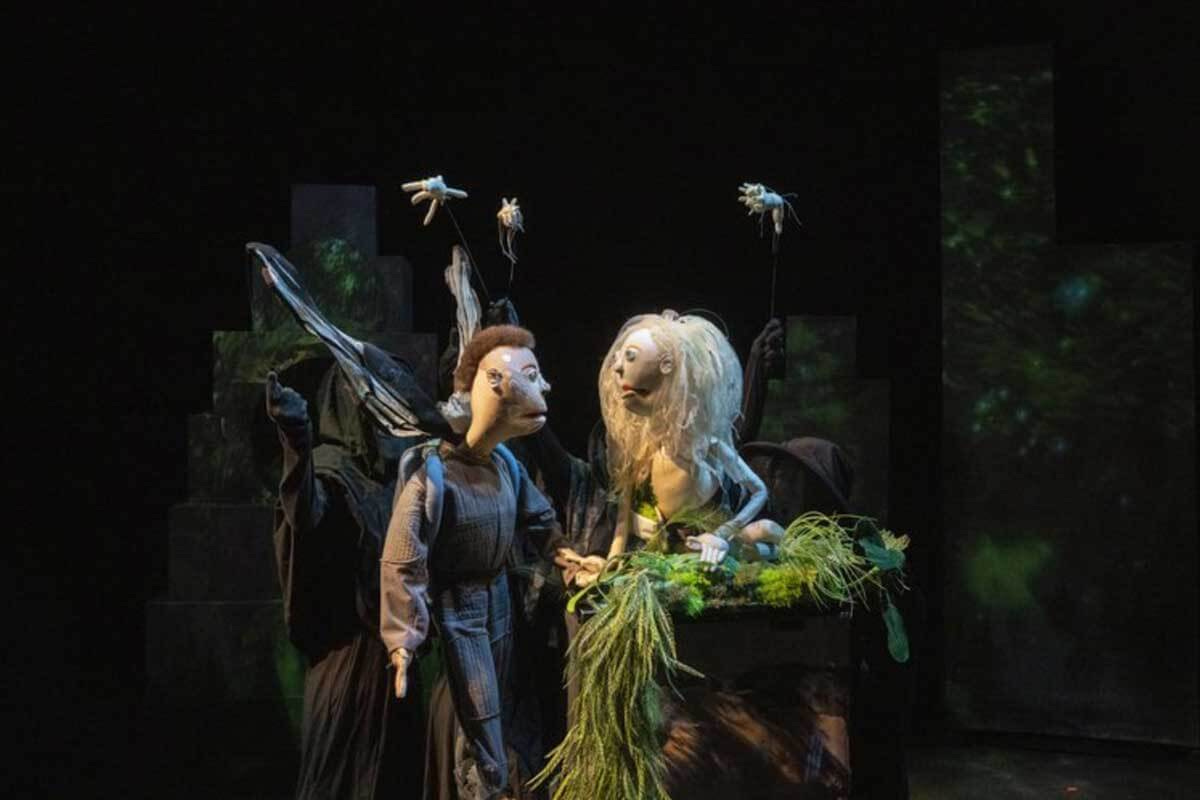

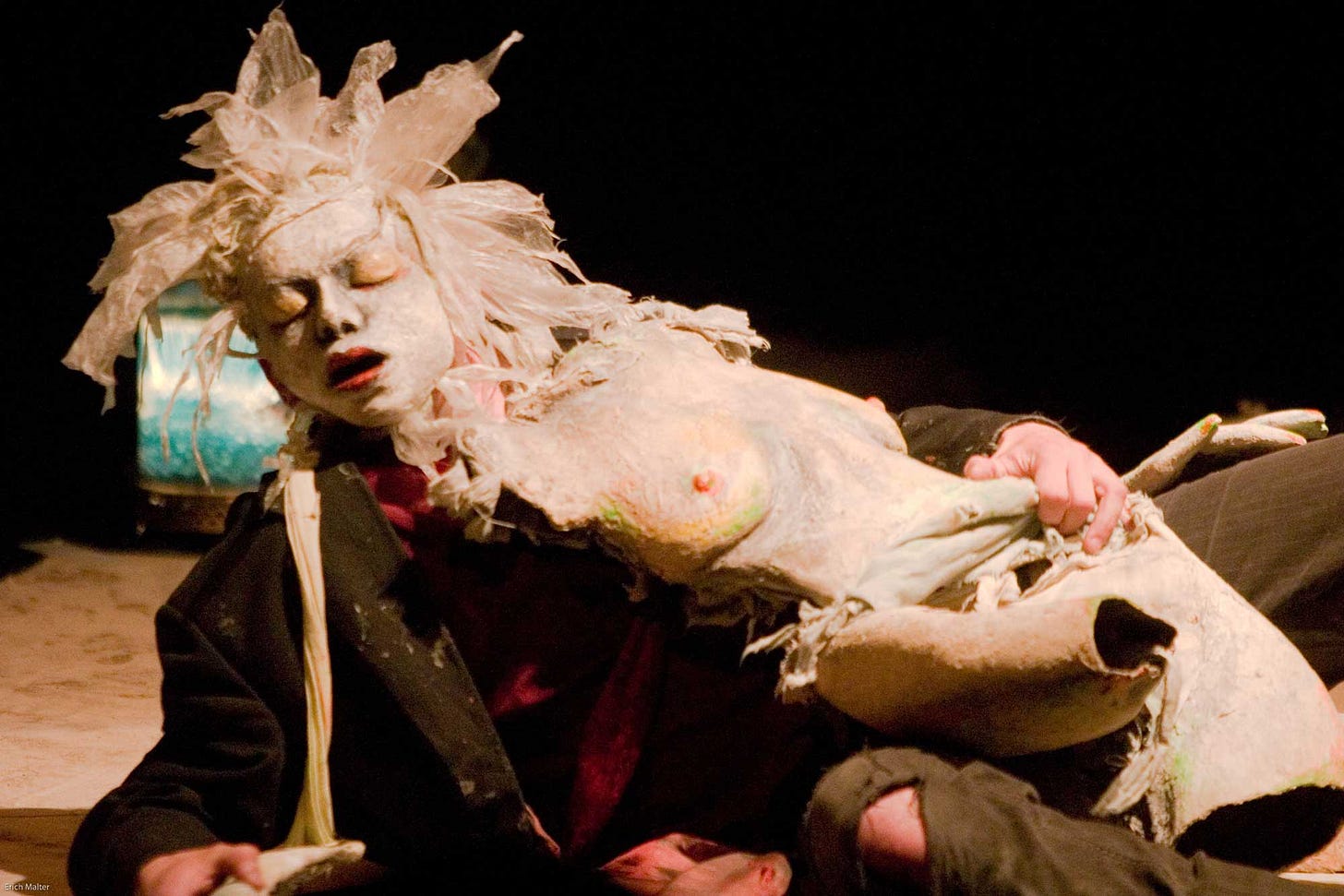
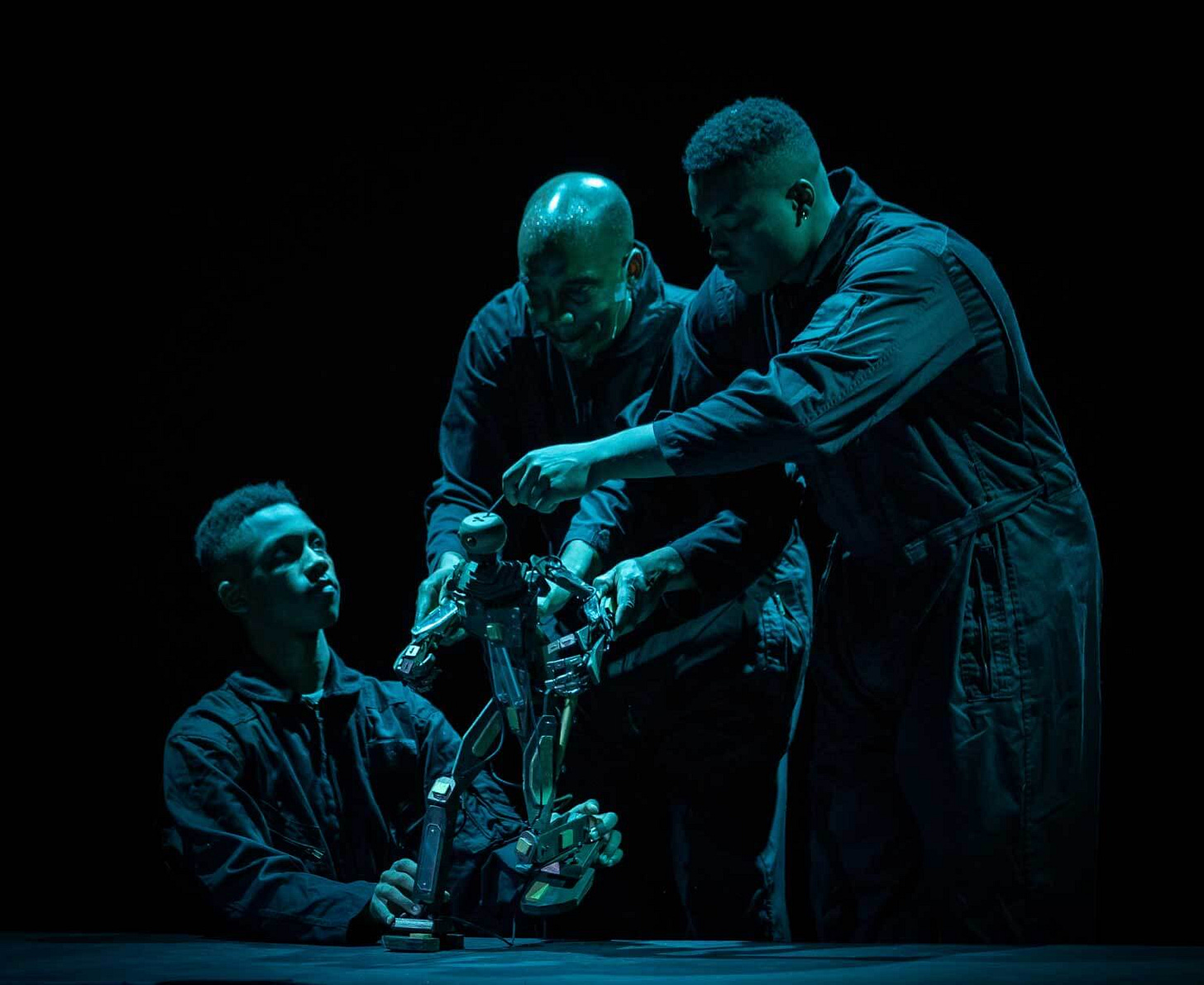

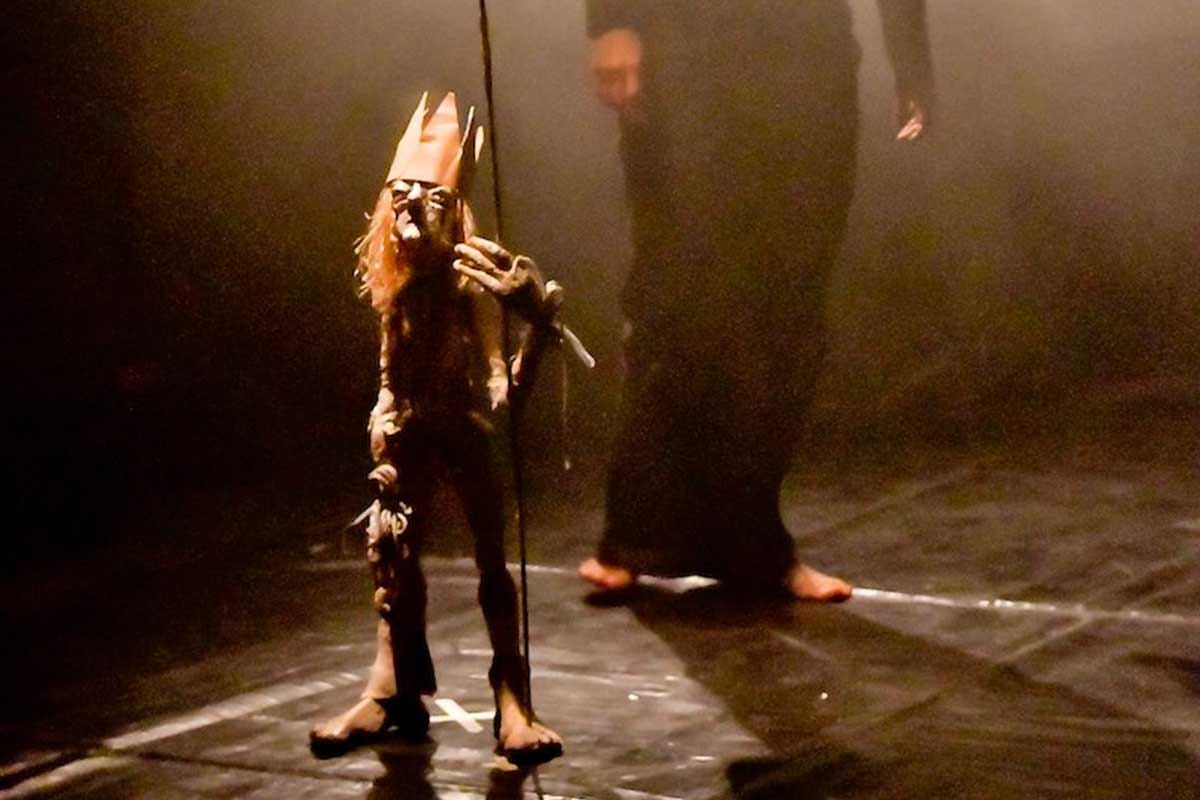



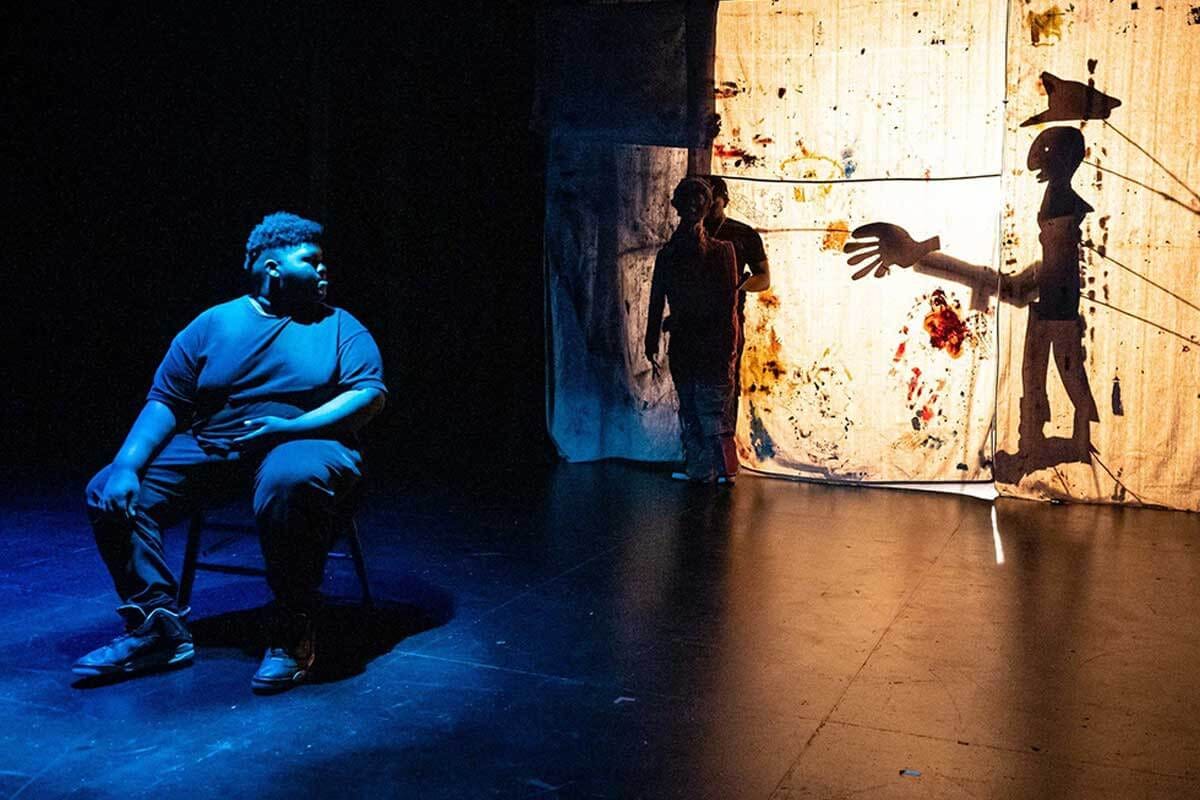

dang! i need to see some of these if they go on tour to SF eeeeek. Thanks for the writeup!